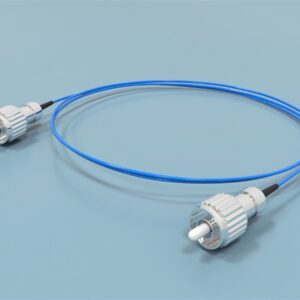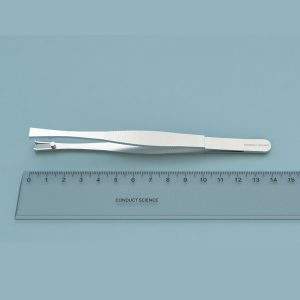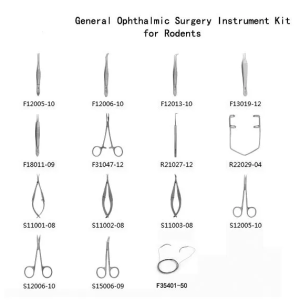$1,990.00 – $2,990.00Price range: $1,990.00 through $2,990.00
The MazeEngineers Vertical Tank Array is designed for conducting anxiety experiments with zebrafish, focusing on vertical diving behavior to evaluate anxiety levels. The narrow design of the tanks limits horizontal movement, enhancing the accuracy of behavior assessment. Each trapezoid-shaped tank has a 1.5-liter capacity. The set includes six tanks, housed together in a framework that facilitates straightforward video recording and analysis.

MazeEngineers offers custom-built behavioral mazes at no extra cost—designed to fit your exact research needs. Eliminate reproducibility issues from poor sizing or lingering scent cues with precision-engineered, modular, and smart mazes that adapt in real time to animal behavior. Publish new protocols, run adaptive experiments, and push the boundaries of behavioral science.




The novel tank diving anxiety test for zebrafish is a widely utilized protocol for assessing behavioral indicators of anxiety, such as reduced exploration, increased freezing behavior, and erratic movements.
When exposed to a new environment, zebrafish exhibit anxiety responses similar to those observed in rodents during the rodent open field test (Cachat, J.M. et al., 2010). This novel tank test leverages the natural behavior of zebrafish, which instinctively dive to the bottom of the tank and remain there until they feel safe enough to explore (Best, J.D. et al., 2008).
As the zebrafish gradually adapt to the new environment, their locomotor activity increases significantly. This adaptation is evidenced by more movement, less freezing, and more frequent entries to the upper portions of the tank (Wong, K., et al., 2009; Stewart, A., et al., 2010). This behavior mirrors the rodent open field test, where rodents display anxiety-like behavior by staying close to the walls (thigmotaxis) but begin to explore the central area once they become less stressed (Choleris, E., et al., 2001; Bronikowski, A.M., et al., 2001).
The novel tank paradigm was developed by Edward D. Levin, Zachary Bencan, and colleagues in 2006 to study the anxiolytic effects of nicotine in zebrafish. Their research has been instrumental in understanding nicotine addiction and remission, as well as nicotinic receptor mechanisms.
Using zebrafish to evaluate anxiety is a relatively new approach. Peitsaro et al. established that zebrafish tend to swim along the edges of a novel tank, and that previous experience in the environment reduces the time spent near the walls. However, their study did not consider the vertical location choices of the subjects.
Levin, Bencan, and colleagues later discovered that assessing vertical location choices provides a reliable measure of zebrafish adaptation to a novel environment and the effects of drug treatments on this adaptation.
The apparatus consists of a plastic trapezoid tank measuring approximately 22.9 cm in length at the bottom, 27.9 cm at the top, 15.2 cm in height, and 15.9 cm along the diagonal side.
The tank’s width is about 6.4 cm at the top and narrows to approximately 5.1 cm at the bottom.
It can hold up to 1.5 liters of water and should be placed on a level, stable surface.
The activity is recorded using a video tracker such as Noldus Ethovision XT, positioned about 51 cm from the apparatus.
The novel tank task aims to evaluate anxiety-related behaviors in zebrafish by comparing swimming activity between vehicle-treated control groups and disease model or intervention groups within the novel tank environment.
The experimental subjects must be naive to the experiment. Prior to testing, they should undergo a minimum acclimation period of 2 weeks to adjust to the new environment. Water temperature is maintained at approximately 28.5 °C, and the subjects follow a 12-12 hour light/dark cycle.
Typically, subjects are housed in groups of 20-30 in home tanks with recirculating deionized water and are fed flakes or brine shrimp twice daily.
One hour before testing, subjects are transferred from their home tanks to the experimental room to reduce crowding stress, with no more than four subjects per liter of water.
Subsequently, subjects are pretreated with the drug of interest. The duration of pretreatment varies depending on the drug and its dosage. Usually, the drug is administered 10-30 minutes prior to testing for single (acute) treatment. Administration methods include immersion or intraperitoneal injection.
Before commencing the experiment, position the novel tank in front of the Noldus Ethovision XT for optimal video recording. Ensure adequate illumination covers every area of the tank.
In setups involving multiple novel tanks, each tank is partitioned by opaque colored barriers to prevent subjects from seeing each other during testing.
Subjects are gently transferred into the novel tank individually using a net, allowing them to swim out naturally. Once introduced, the experiment typically runs for 5-6 minutes to assess behavioral indicators of anxiety.
Dependent measures include time spent in each defined zone and swim path length, serving as indices of anxiety based on position choices.
In the initial version developed by Edward D. Levin, Zachary Bencan et al., the tank was segmented into three virtual horizontal zones: top, intermediate, and bottom.
A substantial revision to the novel tank paradigm was introduced by Jonathan Cachat et al. in 2010. They streamlined the protocol by dividing the tank into two virtual zones: top and bottom, aiming to enhance the efficiency of measuring anxiety-like behavior in zebrafish.
The tank was bisected horizontally into two equal portions, delineated by a marked dividing line along the tank’s external walls.
The data from the study compared anxiety-related behavioral indicators between a control group treated with vehicle and a group administered with nicotine, focusing on the temporal aspects. The graph clearly shows that nicotine led to a reduction in freezing episodes and erratic movements, while enhancing the exploratory behavior (locomotion) of the subjects in the study.
The novel tank anxiety task serves as an excellent tool for drug screening due to its capability to modulate anxiety-like behavior using anxiogenic and anxiolytic agents (Egan, R.J. et al. 2009).
This model provides a straightforward, cost-effective, and efficient alternative to other methods used to quantify stress responses in zebrafish.
The novel tank protocol is a valuable paradigm for investigating a range of neurobehavioral functions, including reward and cognitive function (Bencan, Z, et al. 2009).
This task facilitates the swift evaluation and analysis of extensive datasets.
This model does not encompass all anxiety behaviors such as scototaxis or dark/light preference, nor does it cover all behavioral domains including drug reward properties.
This protocol is specifically designed for investigating anxiety-like behaviors in adult zebrafish. The novel tank test is not suitable for use with larval zebrafish models.
Cachat, J.M. et al. Deconstructing adult zebrafish behavior with swim trace visualizations. In Zebrafish Neurobehavioral Protocols. (eds. Kalueff, A.V. & Cachat, J.) (Humana Press, Totowa, New Jersey, 2010).
Best, J.D. et al. Non-associative learning in larval zebrafish. Neuropsychopharmacology 33, 1206–1215 (2008).
Wong, K. et al. Analyzing habituation responses to novelty in zebrafish (Danio rerio). Behav. Brain Res. 208, 457 (2009).
Stewart, A. et al. The developing utility of zebrafish in modeling neurobehavioral disorders. Int. J. Comp. Psychol. 23, 104–121 (2010).
Choleris, E., Thomas, A.W., Kavaliers, M. & Prato, F.S. A detailed ethological analysis of the mouse open field test: effects of diazepam, chlordiazepoxide and an extremely low frequency pulsed magnetic field. Neurosci. Biobehav. Rev. 25, 235–260 (2001).
Bronikowski, A.M. et al. Open-field behavior of house mice selectively bred for high voluntary wheel-running. Behav. Genet. 31, 309–316 (2001).
Levin, E.D., Bencan, Z. & Cerutti, D.T. Anxiolytic effects of nicotine in zebrafish. Physiol. Behav. 90, 54–58 (2007)
Peitsaro N, Kaslin J, Anichtchik OV, Panula P. Modulation of the histaminergic system and behaviour by alpha-fluoromethylhistidine in zebrafish. J Neurochem 2003; 86:432–41.
Cachat J. et al. Measuring behavioral and endocrine responses to novelty stress in adult zebrafish. Nat. Protoc. 5, 1786–1799 (2010).
Egan, R.J. et al. Understanding behavioral and physiological phenotypes of stress and anxiety in zebrafish. Behav. Brain Res. 205, 38–44 (2009).
Bencan, Z., Sledge, D. & Levin, E.D. Buspirone, chlordiazepoxide and diazepam effects in a zebrafish model of anxiety. Pharmacol. Biochem. Behav. 94, 75–80 (2009).
| Tank array | 3 Tank Array, 6 Tank Array |
|---|
There are no questions yet. Be the first to ask a question about this product.